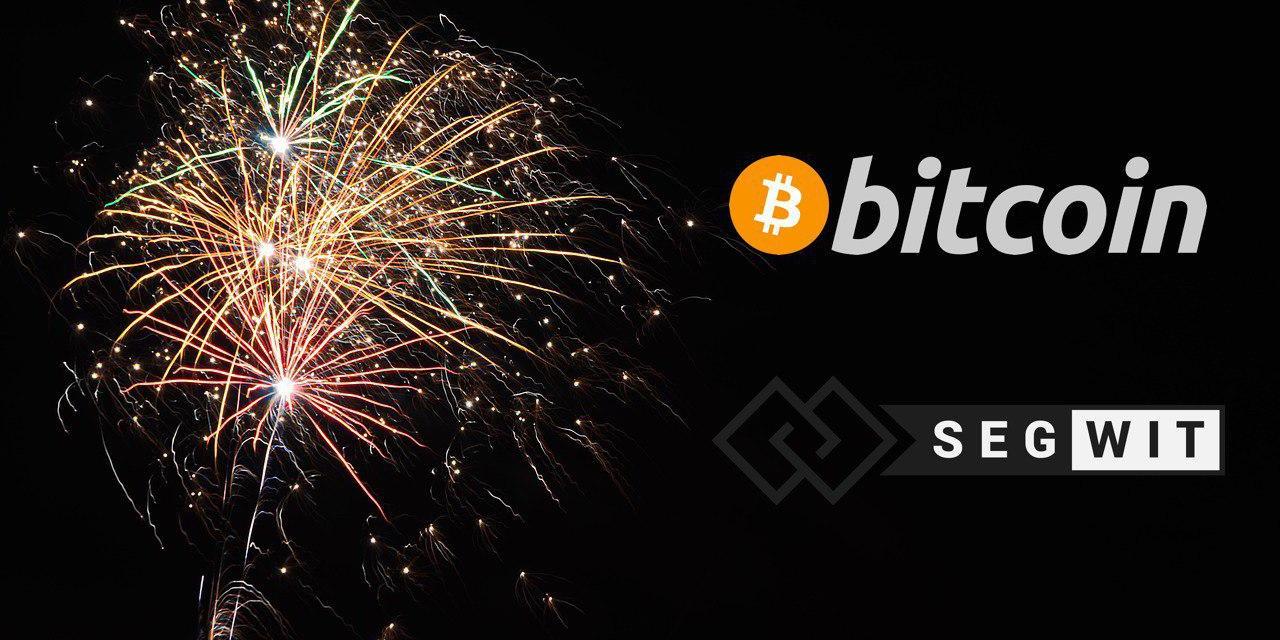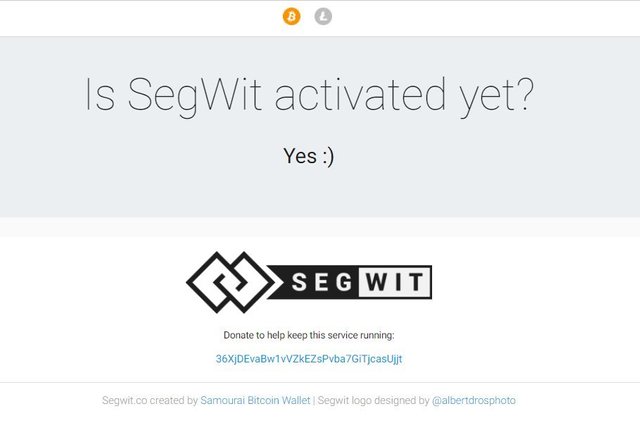
SegWit (Segregates Witness), the protocol designed by Bitcoin Core to improve the scalability of the Bitcoin network, is officially active in block 481,824 mined by BTCC, with 99.95% support in the network.

SegWit is a software update that has been developed for two years by the Bitcoin Core team. Its implementation offers security solutions that prevent malleability attacks from transactions by a third party. But, mainly, the software that supports the network will allow the number of transactions per block to increase, which can currently be around 2,000 in blocks of 1 MB. However, in this first block mined with SegWit, only 1,866 transactions have been registered at the moment.
Nevertheless, many in the community still wonder why a solution such as SegWit is needed. The answer is that under current conditions the Bitcoin network registers an average of 200,000 transactions a day, reaching peaks above 300,000 between May and June of this year. But a larger user base has decided to use the Bitcoin blockchain, while it has extended adoption among large companies and financial groups. This is equivalent to a greater demand for transactions for the future.
This means that, with SegWit active now, the number of daily transactions could increase. The SegWit upgrade will begin to take effect once the blocks begin to fill with more transactions.
SegWit will also allow you to use a series of developments in the second layer of the blockchain, such as Lightning Network, which offers users payment channels as an alternative way to make bitcoins transactions much faster. By setting up alternative payment channels, the same channel could be used to generate numerous transactions. But other applications, such as smart contracts, are also in the sights.
Probably the price of bitcoin continues to be the preponderant factor in the constant adoption of the cryptoactive, since it has reached historical highs of appreciation of its value. But an increase in the ability to process transactions and the adaptation that SegWit offers to resolve security vulnerabilities will also attract more users and organizations.
The acceptance of the changes that SegWit proposes is not only related to the market conditions but also to the possibility of expanding the network's capabilities: being lighter, thanks to the features that SegWit incorporates, transactions become cheaper but also the confirmation times could be shortened as the possible congestion disappears.
Many merchants now accept bitcoin because, although they do not receive many payments, it is not an expense to keep a portfolio. A growing market should provide an environment where no one should expect or pay more for transacting on the network.
On August 8 the consensus of the mining groups blocked SegWit. This means that a majority of nodes in the network have already accepted the Bitcoin software update. The activation of the code, however, is accompanied by a series of measures against those mining groups that are preparing to increase the size of the blocks.
According to the developers of Bitcoin Core, any node that implements blocks of more than 1 MB will be rejected by the nodes of the Bitcoin blockchain. This, in November, can cause the appearance of 3 bitcoins: Bitcoin Cash, Bitcoin Core and Bitcoin SegWit2x. Although for the moment, everything is celebration.
On Twitter many users, using the tag #SegWitParty find themselves posting their own photos of the celebration. From the Trezor cold wallet service, in addition, they have offered the raffle of three of their wallets for one of these users, who basically just have to celebrate that SegWit has arrived to have a chance to win.